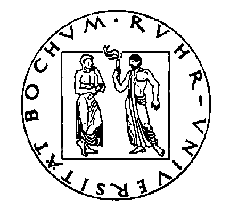 |
|
 |
 |
|
 |
Audiotexts combining acoustic presentation with written text
We use the term audiotext to describe a coordinated matching of written and acoustic fragments of registered speech. Acoustic citation, in a sense, is also an audiotext. The software SonaHear extends the range of listening options. The program makes use of a file table to coordinate visual and auditive editing appropriate for different goals.
As a file listing in this sense one can make use of a list of file names in alphabetic or any other progression determined by the user, or the portions of text being ascribed to these files in the course of a working session. Here is an example of an audiotext:
The list of file names or the sequence of text fragments with their associated audiofiles as maintained by our program SONAHEAR allows for combined listening and editing on the screen. While reading the text you can move the cursor into one of the lines and listen to the corresponding audiofile by pressing ENTER. If you press a number instead you can listen to the same audiofile plus the corresponding number of following fragments. If you can't hear anything, see technical problems connected with hearing options.
The idea behind the preparation of linguistic material as an audiotext is to accompany the data from the moment of registration through all steps of scientific exploitation in order to facilitate the auditory reproduction for varying purposes. The preconditions and the results of the listening procedures and the interpretation thus remain under control. It can be repeated and registered.
For an audiotext to be presented on our LiLab server no previous publication (as in the case of acoustic citations to publications) is necessary. All that is necessary for this kind of presentation is that you provide other users with information concerning your goals, i. e. that
As an example of an audiotext we present text nr. 15 "Priezd syna" from the reader "North-Russian Dialects":
Kasatkina R. F. (1991): Russkie narodnye govory 1 - Severnorusskie govory. Bjulleten´ foneticheskogo fonda russkogo jazyka, prilozhenie 1, Moskva -Boxum.
In our text we preserve the transcription of the original publication. The corresponding audiofiles can be heard in two ways:
a) via internet, choosing the written version;
b) by making copies of the audiofiles and making use of any audio software, including our program SonaHear.
For publications based on these materials, Sappok 1996a and Sappok 1996b, see Akustische Zitate. You can get more information about the informant and other related material from R. F. Kasatkina and Ch. Sappok.
05. Mai 1998